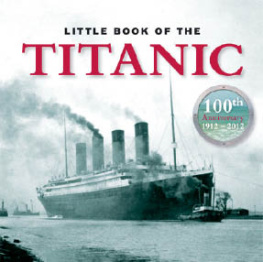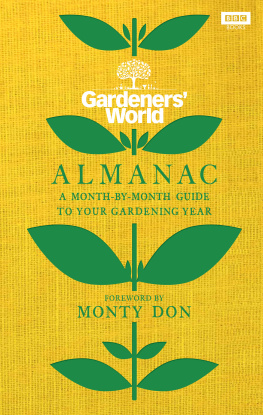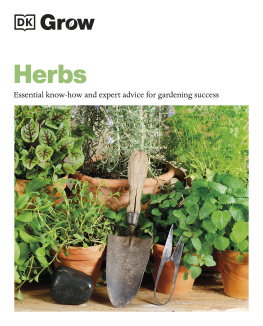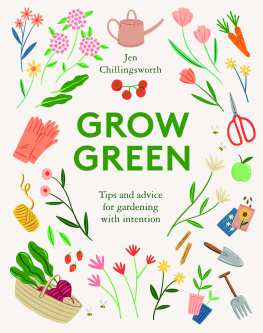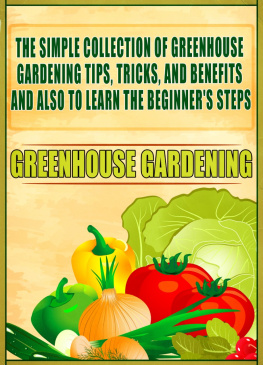David Curnock - The Little Book of Gardening Tips
Here you can read online David Curnock - The Little Book of Gardening Tips full text of the book (entire story) in english for free. Download pdf and epub, get meaning, cover and reviews about this ebook. year: 2010, publisher: G2 Rights Ltd, genre: Children. Description of the work, (preface) as well as reviews are available. Best literature library LitArk.com created for fans of good reading and offers a wide selection of genres:
Romance novel
Science fiction
Adventure
Detective
Science
History
Home and family
Prose
Art
Politics
Computer
Non-fiction
Religion
Business
Children
Humor
Choose a favorite category and find really read worthwhile books. Enjoy immersion in the world of imagination, feel the emotions of the characters or learn something new for yourself, make an fascinating discovery.
- Book:The Little Book of Gardening Tips
- Author:
- Publisher:G2 Rights Ltd
- Genre:
- Year:2010
- Rating:3 / 5
- Favourites:Add to favourites
- Your mark:
- 60
- 1
- 2
- 3
- 4
- 5
The Little Book of Gardening Tips: summary, description and annotation
We offer to read an annotation, description, summary or preface (depends on what the author of the book "The Little Book of Gardening Tips" wrote himself). If you haven't found the necessary information about the book — write in the comments, we will try to find it.
This little book contains all the best seasonal gardening tips to help even the least green-fingered person!
The Little Book of Gardening Tips — read online for free the complete book (whole text) full work
Below is the text of the book, divided by pages. System saving the place of the last page read, allows you to conveniently read the book "The Little Book of Gardening Tips" online for free, without having to search again every time where you left off. Put a bookmark, and you can go to the page where you finished reading at any time.
Font size:
Interval:
Bookmark:
eBook Design by Scott Giarnese
Published by G2 Entertainment Limited
Publishers Jules Gammond and Alan Jones
Written by David Curnock
First published in the UK in 2008
G2 Entertainment Limited 2011
www.G2ent.co.uk
All rights reserved. No part of this work may be reproduced or utilised in any form or by any means, electronic or mechanical, including photocopying, recording or by any information storage and retrieval system, without prior written permission of the publisher.
The views in this book are those of the author but they are general views only and readers are urged to consult the relevant and qualified specialist for individual advice in particular situations.
G2 Entertainment Limited hereby exclude all liability to the extent permitted by law of any errors or omissions in this book and for any loss, damage or expense (whether direct or indirect) suffered by a third party relying on any information contained in this book.

Desiccant, most commonly silica gel crystals, can be obtained from hobby shops, hardware stores and some garden centres. Ensure that the desiccant contains a colour indicator; the product is normally blue but turns pink, if moisture is present; thus helping to ensure the correct storage conditions are maintained. Economical, it can be re-used after re-activation, in a warm oven at 200 degrees F, until the crystals turn blue again. Powdered milk is a good, emergency substitute for silica gel; simply place the powder in a paper towel wrapper in the storage jar. Check frequently, say monthly, for dampness and renew powder, as necessary.
For the novice gardener, herbs are an ideal starting point. Annuals such as basil, coriander, and marjoram, and the perennial mint, fennel and thyme, can all be grown in almost any sunny spot, either in containers, in a formal herb garden or in borders. Be warned that some varieties of mint, especially, can be invasive, and will soon begin to take over: these plants are best grown in containers to keep them under control. Woody perennials, such as rosemary and sage, can make an attractive feature, or form a division between areas of the garden, as well as being useful in the kitchen.
Always ask for advice from other gardeners. Many will happily set you on the right track, and may even offer some leftover plants or seedlings! Neighbouring gardeners will probably offer tips on what grows best in the local conditions. Although a nursery or garden centre is in the business of making money, it is in their interest to help you, their customer; most are only too willing to help so dont be afraid to ask! Find out about plants or seeds before you buy them its your money you are spending, so make sure the plants are right before you buy.

BUY IT NOW FROM AMAZON
UK
USA

BUY IT NOW FROM AMAZON
UK
USA

BUY IT NOW FROM AMAZON
UK
USA
Read the information on seed packets, and in catalogues, carefully! Make sure that the seeds you are about to buy are suitable for your garden conditions. The packets are a great source of information as to which plants are suitable for various growing locations and soil types, as well as giving information on the colour, height and spread of the mature plant. Dont try to grow deep-rooting plants in shallow containers; conversely, dont attempt to grow delphiniums, or other tall plants, in window boxes! The instructions on the packet are for your benefit, and have usually been written by somebody who has an in-depth knowledge of plants and planting methods.
Some types of plants are too tender to be planted outdoors until all chance of frost has passed; in some areas, this can be late in May, or early June. In order to maximise their growing season, seeds can be sown indoors in March, or early April. This is done by sowing seed in shallow seed trays, or in plant pots, using seed compost. Do not use garden soil as this may contain weeds or parasites that may harm the seed or seedlings; better results will be obtained using the correct compost.
Ideally, seed should be sown in a peat-based compost that has been sterilised, and fortified with nutrients. Most proprietary seed composts meet these requirements. Level the compost in the seed tray using a straight-edge: do not compact the soil. Water the compost, but do not soak, using a hand sprayer or fine rose watering can. Sow seed thinly, then cover with a thin layer of compost. Generally, small seeds are left uncovered, so follow the directions on the packet. Place the finished tray in a warm place, between 60F and 70F (15.5-21C) is ideal. Cover with glass, and place a sheet of brown paper on top. Dry the glass, and turn it every day; this prevents condensation from making the compost too wet. When seedlings appear, remove the paper, prop up the glass to allow air to circulate, and place the tray in good daylight, turning regularly to prevent uneven growth.
Seedlings should be pricked out into seed trays or plant pots that contain a potting compost. Prick out when two pairs of leaves have formed. Handle seedlings by their leaves, not by their roots or stems, as this could cause damage. Space out at 1-inch (40mm) intervals and place in the shade for a day or two. Harden off, by placing in a cool room indoors, or cold frame outdoors, for a day or two, then place outside during the daytime for several days. Leave outside at night for a week or so, ensuring no frost is forecast, before finally planting out in position.
Seeds can also be sown in small pots, indoors, in a warm place between 60-70F (15.5-21C). The pots should be covered with a clear polythene bag, secured with a rubber band or plant tie. When the seedlings appear, remove the bag, place the pot on a light window sill, away from direct sunlight. Turn the pot regularly to avoid lopsided growth, and remember to keep the compost moist, but not wet. Prick out seedlings, and harden off, as before.
Growing bags can be used almost anywhere, and are an ideal way to grow tomatoes, aubergines, chillies and cucumbers, on sunny patios and balconies, as well as in the greenhouse. Dont forget to label with the plant variety and, if a novice gardener, add care instructions about pinching out shoots, etc. If the growing bag is on an upper floor balcony, be a good neighbour, and try to prevent water from draining onto the downstairs properties.
Before planting a growing bag, loosen the compost in the bag by first shaking it, and then kneading, to break up any lumps. After first piercing the bottom of the bag for drainage, shape the bag into an even, slightly humped form, and ensure the compost is evenly distributed. Cut out the marked areas on the bag for planting larger plants, such as tomatoes and courgettes or cut out a long rectangle for rows of smaller plants. Scoop out sufficient compost to accept the root ball of the plant, place the plant in the hole with the top of the root ball just below the top surface of the compost, then infill compost around the plant. Lightly firm in the plant, using finger tips or a small stick of wood, then water well.
Font size:
Interval:
Bookmark:
Similar books «The Little Book of Gardening Tips»
Look at similar books to The Little Book of Gardening Tips. We have selected literature similar in name and meaning in the hope of providing readers with more options to find new, interesting, not yet read works.
Discussion, reviews of the book The Little Book of Gardening Tips and just readers' own opinions. Leave your comments, write what you think about the work, its meaning or the main characters. Specify what exactly you liked and what you didn't like, and why you think so.

